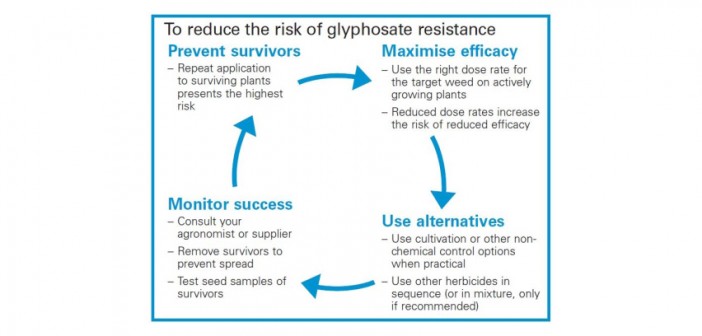Updated guidelines from the Weed Resistance Action Group (WRAG) have been published by AHDB in response to the ‘real risks’ of glyphosate resistance developing in UK weeds.
While there are currently no known cases of glyphosate resistance in UK weeds, the guidelines build on global experience to help growers maintain the effectiveness of glyphosate as a weed control option.
Glyphosate has been around for 40 years and has become one of the most frequently used herbicides across UK crop production, partly due to increasing resistance to selective herbicides and the loss of other herbicide products.
James Clarke, WRAG Chair and Science and Business Development Manager at ADAS, warned, “A number of high-risk practices are being increasingly deployed on UK farms which could drive the evolution of glyphosate resistance in UK weeds – including multiple glyphosate applications, sub-lethal doses and suboptimal application timing – and we wanted to be proactive in highlighting the risks and promoting best practice.”
The new Minimising the risk of glyphosate resistance guidelines includes four simple and key messages, supported by more detailed evidence and guidance:
1. Prevent survivors: Avoid repeat applications to surviving plants
2. Maximise efficacy: Apply the right dose rate (reduced rates increase the risk of reduced efficacy), at the right timing, in the right conditions
3. Use alternatives: Use non-chemical options (such as cultivation), where practical, and use other herbicides in sequence
4. Monitor success: Remove survivors and report potential resistance issues to your advisor and/or the product manufacturer.
A two-page summary of the guidelines (AHDB Information Sheet 03) is available from the AHDB website and a full version of the guidelines is available to download from the WRAG website.

The post New guidelines for glyphosate resistance appeared first on Hort News.